Guess Baby Denim 5 Pocket Jean, Dark Stone, 6 Months
” read more “
2:40 PM
” read more “
1:40 PM
 Mis Tee V-Us - Infant Boys 2 Piece Long Sleeve Giraffe Pant Set, Grey, Brown (Size 18Months)
Mis Tee V-Us - Infant Boys 2 Piece Long Sleeve Giraffe Pant Set, Grey, Brown (Size 18Months)5:20 PM
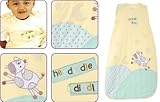 Baby Sleeping Bag Hey Diddle 0-6 Months 2.5 TOG
Baby Sleeping Bag Hey Diddle 0-6 Months 2.5 TOG6:15 PM
OK, so if you have found this page, you are obviously thinking about having a baby and you are looking for a baby gender selection technique to assure you conceive the gender of your choice. Now, you just need to know the steps to take to assure that is the gender you conceive. That is what I am here to share with you today, the natural techniques you can use to increase the chances that your baby will be the gender you desire.
Now, I know that the process of baby gender selection can seem like it might be very complicated, but it is actually quite simple when you know exactly what it is you are trying to do. When you are trying to choose the gender of your baby, what you are actually doing is choosing the sperm you want to fertilize your egg. You are choosing between the two different chromosomes sets that sperm carry. For example, if you want a boy you want the sperm with the X,Y chromosomes to fertilize your egg and if you want a girl you want a sperm with the X,X chromosomes to fertilize your egg. And that's it! That is the only thing you are trying to make happen during the process of baby gender selection.
So essentially, in order to assure that you conceive the baby of your chosen gender you must eliminate a large number of the sperm with the chromosome combination of the gender you don't want, thus leaving all the sperm with the correct chromosomes ready, willing, and able to fertilize your egg.
Note: There is one more thing to take into consideration here; you need to know that boy sperm is fast but doesn't live very long and girl sperm is slow, but very strong. Just a little something to keep in mind as you read the rest of this article.
The Natural Methods You Can Employ during Baby Gender Selection:
What is the best time to have a boy or a girl?
OK, now remember what I said about girl sperm being slow, but steady and boy sperm being quick and short lived, well this information is important to know during the baby gender selection process because it will dictate when you should be trying to conceive.
If you are trying to have a boy, you will want to try and conceive as close to your ovulation time as possible, remember these little guys don't live very long, so you want to give them a fighting chance for as many of them to get to your egg as possible.
If you are trying to have a girl you should try and conceive around 3 days before you ovulate because the girl sperm will still be alive and kicking when you ovulate, while the boy sperm will have died off. If you don't know how to tell when you ovulate, I recommend an over the counter ovulation test for ease and reliability.
Intercourse Positions to Use for Baby Gender Selection:
OK, again we have to remember the aforementioned characteristics of each sperm. If you want to conceive a boy you need to give these vulnerable little guys a straight shot to the egg, you want them to be as close to the egg as you can get them during the conception process. To achieve this, use deep penetration positioning the sperm to eject at the base of the cervix.
If you are trying for a girl, you will want to use shallow positions that leave the sperm far away from the egg. The long lived girl sperm will make the trip and the fast boy sperm will die off before the end of the journey.
One Final Tip: The Vaginal Environment:
OK, so now we have these two chromosomal sperm that are getting ready for a race to the egg; the quick yet vulnerable boy sperm and the slow moving but strong willed girl sperm. Now, depending on which racer you're rootin' for, you have the ability to create the perfect environment to house the sperm you want to win.
If you have your hopes set on a girl then you will want to go for a highly acidic environment. The acidic environment will kill off the boy sperm. If you want a boy then you will want to have a very alkalized vaginal area creating a less harsh environment for your boy sperm to live in.
To make things even simpler, you can actually test the acidity of your vaginal area using pH strips that can be purchased at a health food store. This result will tell you how much work you have ahead of you to change that environment. Depending on the gender you are shooting for you can change your acidity levels by either eating very acidic foods or staying on an alkaline based diet.
Baby Gender Selection - Things You Can Do When Choosing Baby GenderInside North Korea Video Clips. Duration : 46.03 Mins.
If you are looking for an increased chance of success in conceiving your baby's chosen gender then you should check out the Ultimate Baby Gender Selection Guide. This technique was created after billions of dollars of research and has a 98% Success Rate. Meaning you have a 98% chance of achieving the baby gender of choice. Copyright 2009, Baby Gender Selection | Choosing Baby Gender Resources.
1:30 PM
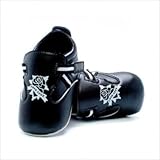 Silly Souls True Love Shoe, Black/White, 12-18 Months
Silly Souls True Love Shoe, Black/White, 12-18 Months12:09 AM
So you are looking for a Christmas gift for a new baby. What should you get?
From the time of birth until the age of 3 months, baby's vision is not fully developed. He or she sees blurry images images. Black and white is seen more clearly than colors so for newborns, black and white toys or bedding in black and white prints would capture the baby's attention most.
As the child gets older, colors are preferred. Older babies and kids would prefer colors. Bright colors catch their attention while pastels soothe them.
So what should you get for a baby from birth to 6 months old?
A newborn would probably be too small for clothes meant for ages 0-3 months old. For babies 6 months and below, ease the parent's burden by getting necessities.
I honestly wanted to get diapers and baby wipes for my sister's newborn baby. That was the most practical thing I could find, but honestly, it is like giving someone toilet paper for Christmas. The joy of receiving such gifts just isn't there.
A new dress wouldn't fit baby yet. Maybe at 6 months old, dresses would fit. If you choose to give baby clothes, make them cotton since at that age, babies primary concern would be comfort. Put baby in a pretty lacy dress that scratches and she'd cry or get very fretful because of discomfort.
Some better choices. More for both parents and baby include
1. Baby bath products. Get them in a gift set or get baby shampoo, baby soap or bath, baby oil and baby powder and put them in a pretty basket. You could line the basket with a baby towel or baby clothes, then put the bath products on top of it. Finish off by wrapping it in cling wrap and tying a ribbon for that pretty effect.
2. Baby toys meant for newborns to 6 months old. Be careful where these come from. Babies put things in their mouths. The last thing you might want is to have them put something covered with paint that contains lead or other toxic materials into their mouths.
3. Photo albums or photo frames. Photos store memories of baby's early years. Or better yet, get parents a new camera.
You will find more baby gift ideas amongst these baby essentials
Christmas Gift Ideas For Newborn Babies to 6 Month OldsVoltron - A Ghost and Four Keys Tube. Duration : 23.75 Mins.
at the website [http://www.cheapestsale.com/health/]
10:10 AM
 Hurley Baby/Infant 2 Pc. Sweatsuit Outfit Hoodie & Pants Size: 6-9 Months - Baby Blue
Hurley Baby/Infant 2 Pc. Sweatsuit Outfit Hoodie & Pants Size: 6-9 Months - Baby Blue7:50 PM
Toy safety is a big concern for all parents. There are tons of toys on the market that look like tons of fun for your baby but do everyone a favor and wait until your child is the appropriate age before you purchase them. Small parts and pieces can easily choke your little one and cause unnecessary trips to the hospital. So, how do you find toys that are appropriate? All toys should have an age limit posted on the exterior of the box of the toy but here are a few other guidelines.
Visit http://www.onestopshopforkids.com/kidstoys.html for all types of toys for all ages of kids.
Author of Bright and White Brushing Your Teeth Can Be Fun and A Humorous Guide to Being a First Time Mom. Both books are available on Amazon.com and One Stop Shop For Kids.
3:15 PM
 Calvin Klein Tight Fitting PJ Set, 2 Piece, Beige, 24 Months
Calvin Klein Tight Fitting PJ Set, 2 Piece, Beige, 24 Months7:30 AM
The magical day finally arrived. My baby I and are finally here. She was a douzy at ten pounds. In a few days we finally got to take her home and were we in for a rude and constant awakening. As I write this she is screaming her lungs out for no apparent reason. That ladies and gentleman is the nature of motherhood. You can do whatever you think is possible to try and help her but in the end you cant understand her and she has no other way to tell you what's wrong or what she may need besides screaming and crying. I have a close friend that tried to describe to me the feeling she got when she first took her baby home. It may sound weird but this is what she said to me. She said "all this crying is driving me crazy; I just want to kick her out a window". Now we know she wouldn't even dare do any such thing but that point goes to show you what kind of guerrilla warfare goes on in a home the first month that a baby arrives.
If you are one of those type of people that cant function without 8 hours of continuous sleep than I urge you to never have a baby or to find someone to wake up in the middle of the night to take care of them. The first month we woke up every hour on the hour to give her her feeding and to change her. Even during the day it isn't any easier because she still needs to be fed and she still needs to be changed. She will wake you up to make sure that it happens. Essentially there is almost no sleep involved for you during the first month of parenthood. I know that's a tough pill to swallow but there really isn't anything you can do about it. You either go in knowing full well what is going to happen or you don't go in at all.
Reading this right now doesn't even begin to do justice to exactly what I am talking about because words can never describe the skull penetrating screaming and crying or the crippling effect of no sleep on the body and mind. It is something that you need to experience for yourself but it doesn't hurt to be forewarned about what terrors lie ahead.
I love my baby and watching her grow and mature is something that I can never replace in my life. She is amazing to me every day I see her and even though she will bring you to your knees from pure exhaustion I hope that your children bring you that kind of happiness.
Newborn Baby - What to Expect the First MonthInside North Korea Video Clips. Duration : 46.03 Mins.
This author lives in Flemington, NJ with her husband and 5 month old daughter and is an expert contributing author for a luxury baby shower party favors boutique offering variety of baby gifts, coffee baby shower favors, handprint footprint kits and more. This author and Babygiftstation is also dedicated to providing valuable and informative articles on childcare, baby safety tips, pregnancy health, parenting, potty training and more.
12:45 PM
Q. At what age do most babies start teething?
A. Most babies start around 6 months. While drooling may start way earlier most parents will not see the first tooth erupting until 6 months. Babies are born with all their deciduous teeth in their mouth. The tooth bud development starts in the womb. So all teeth already exist. Teething is the process of eruption of these teeth one at a time.
Q. in what order do teeth erupt?
A. the two lower incisors erupt around 4-6 months. The upper 2 incisors follow shortly. Then comes, the laterals around 6-8 months. Then we see the first molars erupting and last but not least the canines. The second molars usually erupt, around 2 -3 years of age. Most children have all their teeth erupted by 3 years of age.
Q. How many baby teeth are there?
A. 20 deciduous or Milk teeth.
Q. Can teething cause diarrhea?
A. while there really is no scientific research done or published about the connection between loose stool and teething, experts do show some correlation. It has been suggested that the extra saliva produced during this time and swallowed during the drooling process can cause loose stool. It is recommended to allow babies drink chilled water from the bottle. This helps them with the fluid loss due to excess drooling and diarrhea. The cold liquid is also helpful in general with the sore gums.
Q. when should I start brushing Babies teeth?
A. parents can wipe their children's gums before even the tooth is erupted. It is always recommended to wipe babies tooth as soon as it erupts. This can be done with gauze, or a wash cloth or even a soft baby tooth brush. No tooth paste is recommended at this stage. Using an actual tooth brush can be a good way of getting the baby into habit of brushing. As long as you are not brushing to aggressively then a soft tooth brush should be just fine.
Q. Are teething biscuits ok with the dentist?
A. Teething biscuits do contain sugar. I do recommend parental supervision with the teething biscuits. If your little one already has some teeth they can bite the biscuit and choke on it. Always wipe off their teeth with water after they are done eating.
Q. What about homeopathic teething tablets and jells?
A. Some parents swear by these tablets. The most commonly used ones are hylands and humphrys. They do contain some caffeine and belladonna in them. Some parents think that these tablets are all sugar only. I do think that they do contain sugar but they also have some soothing stuff in them. Parental discretion is always required when using these products.
Frequently Asked Questions About Teething BabiesSoul Eater - 6 - The Rumored New Student! Video Clips. Duration : 23.95 Mins.
Visit my Website at http://teethingbabyguide.com for a full description of what these homeopathic remedies contain and how you can check on their safety.
Dr. Arratoonian DDS.
finally a Dentist who will look at your babies dental needs as a Mother. A Dentist and a Mom giving advice on your Babies developmental oral needs. Visit my website for more information on your babies teething needs http://teethingbabyguide.com
8:05 AM
7:10 AM
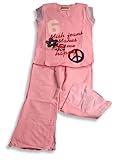 Mish Mish Mish Mish - Infant Baby Girls 2-Piece Pant Set, Pink/ Red/ Navy/ White (Size 6Months)
Mish Mish Mish Mish - Infant Baby Girls 2-Piece Pant Set, Pink/ Red/ Navy/ White (Size 6Months)12:05 AM
You have a brand new baby. Congratulations!!! Now what? Well
here are some things to expect from baby in the first month of
life. Some of these things may or may not happen with your
baby. All babies are different, so don't be concerned if they
do not happen to your baby, in fact your life may be easier if
you don't have to go through them.
Jaundice- The yellowing of baby due to an increased amount of
bili reuben in the blood. Usually this will disappear within
about two weeks or 14 days. In some cases especially in
premature babies, babies need to be treated and stay under a
special bili rueben light until bili Reuben levels return to
normal. Jaundice is more common in boys and in babies that are
premature, jaundice is nothing to be to concerned about, your Dr
will let you know if baby needs treatment or not.
Infant Acne- You might find it odd as I did, that your newborn
little angel has what looks like little zits all over his/her
little face. This is most common in breastfeed babies because
the baby is getting extra hormones through there mother's milk.
Not to worry this will go away just as quickly as it started it
might take a few weeks, but it won't leave scars or marks. In a
few weeks you will have that beautiful soft as a baby's butt
skin you always imagined.
Taking care of the umbilical cord- Don't give baby a full bath
until the umbilical cord falls off. Sponge baths will do just
fine. Keep the umbilical cord dry and exposed to a lot of air.
Clean the umbilical cord with alcohol.
Turn the diaper down and the shirt up. Also try and protect the
skin around the umbilical cord. Alcohol can irritate the skin
and make it red. Try putting lotion or baby powder around the
belly button, and try using a cotton swab to dab on the alcohol.
The umbilical cord stub will fall off in a week or two, and
then you can give baby his/her first bath.
Circumcision- To take care of a baby after circumcision is
usually not a pleasant experience for you or your baby. To make
baby more comfortable use double diapers to help cushion baby
from rubbing against the circumcision. Now a days Dr's use a
circumcision ring and that will fall off when the area has
healed.
Bowel Movements- Your newborn baby should have 5 or more dirty
diapers a day. This seems like quite a lot but its normal. In
newborn babies watery loose stools are also normal.
Spitting Up- It may seem like more is coming back up then going
down, but this is not the case. Chances are a teaspoon or two
is all that is coming up although it looks like a lot more. If
baby is drinking formula the formula may not agree with him/her,
so discuss your concerns with your Doctor.
12:55 PM
The bearded dragon lizard, a native of Australia, is one of the most popular choices when choosing a reptile as a house pet. Mainly due to its docile and friendly disposition, this sociable reptile has been gracing pet stores and houses at an increasing rate.
Adopting the bearded dragon lizard as part of the family requires planning and care. Below are some guidelines that can be used in caring for the baby bearded dragon that will become the newest member of your family.
1. Baby bearded dragons require a lot o food to support their rapid growth rate. Between the first 3-6 weeks, feed your baby dragon about 2-3 times a day. Cricket, veggies, and greens can be used while watering can be done once or twice daily. It is rule of thumb that the food you will feed them must be about half the size as the distance between his eyes. This is to ensure that your dragon will not suffer from terminal indigestion.
2. Check for parasites regularly. Although they are parasite-free upon purchase, being bred in captivity, there is always the danger of parasite infestation once your baby dragon has been exposed to the elements, especially to the bugs, worms, and crickets he will be fed with.
3. Provide ample space for your dragon to grow in. The recommended size is a 10 gallon aquarium for a newly hatched dragon, while a 20 gallon tank is needed in the next six months due to your baby dragon's speedy growth. When your bearded dragon reaches adulthood, the size should be changed to a 50 gallon tank to provide enough space for basking, exercise and growth.
4. Clean the baby dragon's house regularly. Since bearded dragons are messy creatures, their homes must be cleaned twice a day. It is a danger for a baby dragon's health if their surroundings are not kept clean because their young age makes them more susceptible to fleas and diseases. The highest mortality rate of bearded dragons take place during their first month.
5. Provide temperature control in your baby dragon's tank. This can be done by using a temperature gradient. There should a spot warm enough for the baby dragon to bask and lie in and there should be a spot humid enough to answer to the dragon's need for water. Baby bearded dragons need water both as a drink and in the air to aid their growth in the first months of their life. Lack of humidity in the air can actually cause your baby dragon to shed.
6. Provide UV light. The light should imitate the one given off by the sun as this helps in your baby dragon's digestion. Working in a way much like photosynthesis, UV light encourages healthy digestion in your dragon. This is especially important for baby dragons as they are always in danger of indigestion due to your young age and reduced capacity to absorb food in large sizes.
7. It is recommended to use paper towels as your baby dragon's substrate. Its is clean, easy to replace when dirty, and inedible.
8. Handle your dragon daily. This will develop their trust towards humans and build their bond with you. Just make sure that you are gentle in handling them and that you never pick them up them up with their tail. They dislike this and will make them thrash about, which is harmful for your baby dragon. You may choose to scoop them up with your cupped hands.
Michael Torresi is a freelancer and lizard expert. For more tips on raising Bearded Dragons Lizards and having them live 3 times longer, go to http://www.beardeddragonsecrets.com/tips.html
4:15 AM
” read more “
11:15 AM
Baby Fever The first few months of your child's life are the most worrying times you will go through. This is mainly because the baby's immune system has not matured and is not yet effective enough to fight against any infections, which it would be after four or five months. Because of how weak the child's immune system is, something as basic as a fever could be extremely dangerous to them. Therefore it is important for you to learn about your baby, and how to take your babies temperature and understand what the temperature means.
How do I know if my baby has a fever? If you asked a doctor what temperature would be classed as your child having a fever, they would tell you that if the temperature is 38C (100F) or higher then it is likely that your child has a fever. If you are going to attempt to identify when your baby has a fever then you will need to learn how to take your baby's temperature and what you should do if your baby does have a fever.
Should I worry about my baby's fever? If your baby has a fever within the first month of birth, this could be a serious problem for which you should seek professional help from a doctor immediately. If your child has a fever within the first 2 months then this could also be serious and you should seek medical advice. Once the child is slightly older there is not as much case for concern, but it is probably best to contact your doctor, you can never be too careful, especially when your child's life may be at risk.
Taking your baby's temperature. Now you know how to tell if your baby's temperature is high enough for it to be a fever or now, and you know what to do if it is a temperature, you need to know how to measure your baby's temperature.
Traditionally you would have used either an in-ear or rectal thermometer to read your child's temperature. However the problem with both of these thermometers is that they both require you to touch the baby with the thermometer, which is easier said than done when you have a young, tired and ill child.
Now with the new Thermofocus Thermometer you can tell your baby's temperature without touching them, or waking them up. You simply point the thermometers harmless beams at your child's forehead, and within a second you have your child's temperature displayed on the screen.
The Thermofocus Thermometer is the first no touch thermometer, meaning it is a lot easier to use due to not having to touch the child, and due to the no touch technology, it is also a lot more hygienic than a traditional thermometer. You can also use the thermometer to measure the temperature of other items such as baby formula, food, nursery or bath water.
The author, Shane Brown, has created websites and articles convering a wide range of niches including Oak Bureau and Health Grill
6:30 AM
You might have everything ready for your newborn, you have clothes, lots of toys and you may have the nursery furniture picked, however when you're little comes along you'll be in for some very amazing surprises. Below is a list of amazing stuff that you didn't understand about babies, and you'll be impressed just how special your baby really is. Read on to find out more...
1) When an infant is first born, they is going to be tiny, and only weigh on average 6 - 8lbs, however it takes just 6 short months for ones baby to double in weight, which is huge!
2) Despite the fact that most babies are born with very poor vision, a baby is actually capable of recognise their mother almost immediately.
3) When baby is merely 10 weeks old he/she will have already decided if they will be left or right handed.
4) Most babies are born with blue eyes, but after just a few short minutes the colour will change. So make sure you take a quick peak, otherwise you'll miss this unique natural wonder.
5) The youngest of infants are capable of communicate physically, long before they are able to verbally communicate. A growing number of mothers are choosing to teach babies as young as 2 months old simple sign language to better communicate with them.
6) Place your baby in a pool of water and you'll notice that he/she is capable of hold their breath underwater. Being in the womb for such a long time, makes this possible and it is something they can all naturally do.
7) When baby cries the very first time there aren't going to be any tears. This is because you're baby is unable to produce real tears for the first around 8 weeks.
8) From birth until six months, babies can actually breathe and swallow at the very same time. This is a skill they lose at around the six month period.
9) When little one learns how to start crawling, he/she will crawl an average of 200 metres each day. So be sure to move the nursery furniture out of the way, to make some room.
10) Strangely, your baby comes into the world without kneecaps. They develop much later on in life. It's between 2 and 6 years that they start to fully develop.
So the next time you're out shopping for your new babies nursery furniture, hitting an antenatal class or perhaps choosing an ideal toy for your new family member, take a moment and think about how amazing babies really are, and the special moments you and your little ones is going to be able to share together.
Ellis hartman works in conjunction with http://www.babyplanet.biz to bring up to date items and information to new and expecting parents.
4:15 PM
 Fisher-Price Infant To Toddler Rocker, Bug Friends
Fisher-Price Infant To Toddler Rocker, Bug Friends1:00 PM
Baby sign language is making parent's lives easier all over the world. Have you ever tried to soothe your crying baby and felt frustrated that you couldn't understand what she really wanted?
Well you're not alone. In fact, many parents feel the same way. It's difficult at times to know what your baby really wants, and it's not only frustrating to you, but it's frustrating for her as well when she can't communicate what she wants.
Baby sign language involves teaching your baby basic sign language that will help them to communicate their needs, but you may be wondering - can your baby really communicate in this way?
According to new studies, baby sign language is actually quite effective. It all got started with a researcher, Joseph Garcia, who spent some time studying how a baby communicated with his parents who were deaf. The 10-month old was able to communicate fairly well, even at that young age, with his parents. After observing how this worked, Garcia began to promote his sign language for parents who had normal hearing.
Believe it or not, most babies actually can pick up the baby sign language rather quickly. In fact, it's easier for babies to sign at a young age than it is to talk, since they have better control over their hands at an earlier age than they do the muscles in their mouth and tongue. You can actually start teaching babies sign language when they are about six months old, although some are starting even younger. Parents have been amazed at how quickly their babies picked up on the signs.
Teaching baby to sign takes away a lot of the frustration for babies. Instead of having to scream hoping that their parents will figure out the problem, it gives them the freedom to communicate what they need, which is a huge help to both of you.
Some parents are concerned that teaching their baby to sign is going to make them develop language skills at a slower rate. Well, according to studies, this is certainly not the case. In fact, studies show that babies that are taught to sign actually start speaking more quickly. Some signing babies even show a higher IQ later in life.
Baby sign language can be easily taught to your child. There are excellent classes available that can help you to work with your baby, although some parents choose to teach their baby to sign themselves. For parents who decide to do this at home, there are many helpful resources available. You will need a baby sign language chart and an instruction book. Flash cards with pictures are another useful tool.
If you are tired and frustrated at the lack of communication between you and your baby, then baby sign language may be a great choice for you.
Do you have trouble find childbirth info on medical sites? http://www.natural-childbirth-baby-care.com aims to inform you all about natural childbirth and baby care without the jargon making it easy and fun to read
4:45 AM
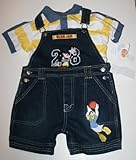 Disney Mickey Mouse Slam Jam 2 Piece Overall Set Size: 24 Months
Disney Mickey Mouse Slam Jam 2 Piece Overall Set Size: 24 Months10:42 PM
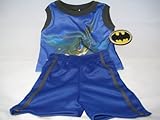 Dc Super Batman Infants Boys 18 Months Vests and shorts 2 Pcs Set New
Dc Super Batman Infants Boys 18 Months Vests and shorts 2 Pcs Set New8:00 AM
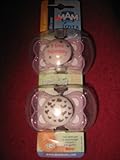 Sassy MAM Love & Affection Silicone Pacifier - 2+ Months - 2 Pack (Girls Color)
Sassy MAM Love & Affection Silicone Pacifier - 2+ Months - 2 Pack (Girls Color)12:25 PM
The frequency of the fetal ultrasound scans which you have during your pregnancy can vary, due to whether there is some cause for concern or any possible complications. The general rule is 2 or possible 3. You will usually have a fetal ultrasound scan at around 20 weeks of the gestational age of the unborn child, which is when many people choose to find out whether they are expecting a son or a daughter. By 20 weeks you can generally distinguish between the different body parts and features of the child, although sometimes it is still difficult for the untrained eye. If you were to have an ultrasound scan every month, the pictures would clearly show how the unborn child grows and develops throughout that time.
During the first two months, though your hormones are changing and you may begin to feel pregnant, the baby will only measure between 0.1 and 0.2 mm by week four, and by the end of month two your unborn baby becomes an embryo with a heart beat. A fetal ultrasound picture should show that the child measures around 8 - 11mm, but you will find it difficult to see which way up it is. By month three the baby will begin to move around, but you won't feel anything. It should measure around 90mm long, with a head around half the total size of the body with large, wide open eyes.
The baby should have grown to around 16 cms by month four, and it is sometimes able to detect the gender, although you need to wait longer to be more accurate. The fingers and the toes begin to form by month five, and it may be possible to feel the baby moving around inside you, which should measure around 25cms. An ultrasound picture at five months will certainly look more like a baby! This is when you can often (but not always) reading of the gender of the baby, and the scan which very many expectant parents look forward to.
By the sixth month, although still very early, some babies born at this time have survived, even though they probably weigh only about 600 grams. Over the next few weeks your baby should grow up to around 35 cms and will be running out of room to move around freely. The baby may start to move towards the birth canal ready for the birth. It is sometimes difficult to get a clear ultrasound picture at this time, but if you can it will clearly show the tiny fingers and finger nails. It might even show your baby with a head of hair, although it is also quite usual to have a baby which is completely bald.
Your baby might be born within two weeks either side of the expected due date (determined from an early ultrasound scan!). You will then be able to take plenty of photographs of your newborn child, but hopefully you'll already have started the family album well before then.
At Adorable Baby 3D/4D Ultrasound, you are able to "meet" your unborn baby! We use brand new 3D and 4D ultrasound technology so that you can actually see your baby in live 4D motion while in your womb.To book an appointment call 925-522-5700 http://www.adorablebaby3d.com Article by Nichole Clark
1:25 AM
8:50 AM
While drinking more water is a good idea for everyone,
especially during hot summer months, too much water can be
harmful to infants 6 months old and younger. According to a
study in Clinicians Reviews a 1997 survey of new mothers
found that nearly 25 percent give their babies water at
least 3 times per week in the first month of life.
Water intoxication is rare in children and adults who are
able to judge their own water needs by thirst and activity.
But babies are not able to do this. Also, the kidneys of
newborns filter more slowly than those of older infants,
causing sodium levels in the blood to be diluted.
According to doctors, 24 cases of water intoxication were
reported at the St. Louis Children's Hospital in the years
1989 to 1991. The problem seems to be increasing since only
10 cases were reported from 1985 to 1988. In the cases
reported the otherwise healthy babies were 4 to 5 months old
and drank three 8-oz. bottles of water within 6 to 12 hours.
Symptoms of water intoxication include pale urine, using
more than 8 diapers a day, and baby sleeping more than usual
and being difficult to wake up.
Mothers should be advised that healthy infants get all the
water they need in breast milk or formula.
A baby can get water intoxication as a result of drinking
several bottles of water a day or from drinking infant
formula that has been diluted too much.
Water fills baby without adding calories, so water
supplementation can result in weight loss or insufficient
weight gain for the baby.
Pediatricians advise feeding babies 2 to 3 oz. more than
their age in months at each feeding. For example, babies 4
months old would be fed 6 to 7 oz. three times a day. More
than 8 oz. at any one feeding rarely necessary. The usual
proportions of milk to water should be about two-thirds milk
to one-third water. With these proportions, the baby
receives about 8 oz of water equally spaced over a 24 hour
period. If the formula is diluted, mild should not be less
than 50 percent.
Only around seven months of age, when baby has started
eating solid foods, should a little water be introduced in a
cup.
Water intoxication can be prevented by following your
physicians instructions.
For more information on water and it's healthy benefits for
old and young alike: http://www.apluswriting.net/health/babywater.htm
REQUIREMENTS FOR REPRINT: You have permission to publish
this article free of charge in your e-zine, newsletter,
ebook, print publication or on your website ONLY if it
remains unchanged and you include the copyright and author
information (Resource Box) at the end. You may not use
this article in any unsolicited commercial email (spam).
You may retrieve this article by:
Autoresponder: babywater@getresponse.com
Website: http://www.apluswriting.net/articles/babywater.txt
Please leave the resource box intact with an active link,
and send a courtesy copy of the publication in which the
article appears to: marilynp@nctc.net
Author: Marilyn Pokorney
Freelance writer of science, nature, animals and the environment.
Also loves crafts, gardening, and reading.
Website: http://www.apluswriting.net
9:55 PM
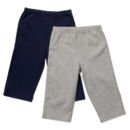 Carter's Baby Boy 2-Pack Comfy Pants Set heather 9 months
Carter's Baby Boy 2-Pack Comfy Pants Set heather 9 months4:20 PM
When you hold a newborn baby, in so many ways it appears to be tiny and helpless. It's hard to believe that a baby is in fact a highly developed being. Perhaps they haven't learnt how to put everything together yet, but all the building blocks are there, just waiting to be put to use.
One of the most amazing things about a baby is the amount of instinctive reflexes a baby has. A health professional will check these reflexes, because their presence shows that baby's central nervous system is working properly.
These reflexes exist to help nurture your baby, as well as protect him. Most reflexes last only for the first few weeks, and will gradually be replaced by voluntary, controlled movements as baby's development progresses.
Search Reflex
If you gently touch your baby's cheek with a finger or breast, baby will instinctively turn that way and open his mouth, ready for food. After about 12 weeks this reflex disappears, which is probably just as well! Mind you, sometimes when a toddler is being fussy about food, mouth closed, arms crossed, it would be nice to gently tap him on the cheek with the spoon and watch his mouth open.
Sucking Reflex
Another reflex designed to help nurture your baby. If you place a clean finger in baby's mouth, he will start to suck on it. This sucking reflex is essential for feeding in the early months, although by the time solids are introduced it has usually disappeared. Sucking can also help a baby to relax - both my babies used to love sucking on one of my knuckles when they were a bit cross or tired - they found it very soothing.
Grasp Reflex
We've all tried this one - put your finger in the palm of baby's hand, and he will instinctively grasp it. Babies will do this up until about 3 months old.
Crawling Reflex
When you lay baby on his stomach, he will bend his legs and poke his bottom in the air - the crawling position. Baby will continue to do this for a couple of months, after which he will be able to lie flat on his stomach.
Walking Reflex
If you life a baby upright, and let his feet touch the floor, his legs will start to make a walking motion. Many babies do this for the first month or so. Be very careful though - baby's neck muscles are still very weak, and his head should also be supported in an upright position. Once this reflex disappears, baby won't be ready to try walking again until around the 12-month mark.
Diving Reflex
I'm not sure I'm keen to test this one, but babies have a diving reflex. If your baby is placed in water, either at birth or later in a swimming pool, his throat will automatically close so that he can't swallow any water. So baby won't drown if born in water, and is in fact a natural swimmer. Usually this reflex lasts for about 2 months, although it can be extended if you regularly take baby swimming.
Babinski's Reflex
If you stroke the sole of baby's foot, his big toe will curl up, while his other toes will spread out. I'm not sure why baby does this, although personally I think it's an early stage of being ticklish! Babies will do this automatically for up to two years.
So there you have it - far from being little blobs that have yet to learn how to do very much, babies are in fact fascinatingly developed. So I hope this article helps you to appreciate all the hidden qualities of your baby.
For more fascinating baby information, visit Info About Baby You can sign up for a FREE Baby Tips newsletter at Baby Tips Newsletter. The author's book about babies is available at Baby's First Year [http://www.baby.learnheaps.com]
6:45 PM
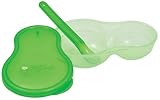 i Play - Green Sprouts Baby Food Grinder 3-12 Months Stage 2-3 Green
i Play - Green Sprouts Baby Food Grinder 3-12 Months Stage 2-3 Green9:30 AM
Being a mother of a child with sensitive skin, I often find myself wondering about the rashes my son will sometimes have. There is nothing worse than the feeling of helplessness that you can feel when you do not know what is wrong with your child. For a mother's peace of mind, here are some of the most common skin rashes:
Baby Acne - This is due to the mother's hormones and looks like pimples. Unfortunately, there is no treatment for this, and you just need to wait it out. Baby acne can last for a couple days up to a couple months.
Erythema toxicum - This rash looks like mosquito bites. This is another rash that has no treatment. The causes for this rash are unknown.
Little White Bumps - These are caused by blocked oil glands. When the glands enlarge (which can take a few days up to a few weeks), the white bumps will disappear.
Salmon patches - These are sometimes called stork bites or angel kisses. They are often found at the back of the neck or even sometimes between the eyes. They tend to fade away on their own after a few weeks or months.
Mongolian spots - These are common in dark-skinned babies. They almost look like a bruise and are flat. They are caused by some pigment that didn't make it to the top layer when baby's skin was being formed. These harmless spots usually fade away by school age.
Cradle cap - This shows up usually at1-2 months of age. Yellowish crusts appear on the scalp and can also include a red, irritating rash on the face, behind the ears, on the neck, and even in the armpits. Depending on your baby's symptoms, your doctor can direct you how to proceed.
Eczema - This is red, itchy patches on the skin. You often will see it on your baby's chest, arms, legs, face, elbows, and behind the knees. It is caused by dry, sensitive skin, and sometimes even allergies. Your doctor can determine if the rash looks like eczema and prescribe the appropriate treatment.
Prickly heat - This looks like small red bumps and will show up on areas of your baby's body that tend to overheat and sweat like the neck, diaper area, and armpits. The treatment is to try to keep the area dry and avoid overheating.
Candidiasis - This is a fungal infection and can show up in different ways. It is called thrush when it is on the tongue and looks like dried milk that can't be scraped off. In the diaper area, it looks like an intense red rash. Candidiasis can be treated with antifungal oral gel, liquid medicine, or antifungal cream (or a combination of all three).
Sometimes, your baby's rash isn't caused by any of these (though, these are the most common reasons for a rash). If your child has sensitive skin (like my son has), sometimes the changes you have to make have to do with the fabrics that touch your child's skin. All diapers are not created equal and not all fabrics will affect your child's skin the same. My own doctor recommended when we were having breakouts that we find the softest material we could find and put him in that. That is when fabrics like bamboo come into play. It is hypoallergenic, antimicrobial, and has natural wicking abilities that make it super absorbent. It also has no chlorine, no formaldehyde, and is pesticide free.
Parenting is a tough job. Sometimes it is hard to know what is normal and what is not when it comes to rashes. This is a list of the most common baby rashes you may encounter and how to treat them.
Douglas Michaels Jr. writes educational articles for Green Earth News, the authority on everything Bamboo. For more information on Baby Rashes. Check out Green Earth Bamboo for bamboo sheets, bamboo baby, duvet covers, clothing and bamboo bath towels, all made from the world's most sustainable and renewable resource on the planet.
4:55 PM
On January 28th NBC announced it was pulling its new reality series The Baby Borrowers from its mid-season schedule and replacing it with My Dad's Better Than Your Dad, a new family competition series. This makes Baby Borrowers the second unscripted, kid-centric series to drop into scheduling limbo. CBS's Kid Nation 2 is also in the can and ready to air, but both shows are being held back despite the demand for new programming created by the 3 month old writers strike. What's up?
NBC's The Baby Borrowers is a version of a UK show that premiered on BBC 3 in January, 2007. The premise was controversial from the start: 5 teenage couples attempt to look after a baby (between 6 and 11 months) for three days, then a toddler, a pre-teen, teenagers and finally an elderly person. Pundits slammed the concept as child exploitation and a significant risk to the babies and toddlers involved. The criticism was muted by the revelation that the teens were "under 24-hour supervision by nannies and the real parents who are stationed next door, watching via monitor, and able to step in at any time."
CBS, anticipating the same type of criticism for Kid Nation, said nothing about its series until a season was in the can. The moment the press release for the series went out, media criticism of the premise began, exacerbated by an insider leak that one of the Kids required medical attention during shooting after drinking bleach. The controversy mounted as the premier date approached, with the New York Times weighing in and various state governments announcing they were examining their child labor laws to prevent Kid Nation 2 or similar series from shooting in their jurisdiction. What wasn't reported was that Kid Nation 2 was cast before episode 1 of season 1 had even aired and was already in post-production by the time the Kid Nation season 1 finale aired Dec. 12th.
Why, at a time when new unscripted programming is desperately needed to fill in the scheduling gaps created by a now 3 month long halt in the production of scripted shows, are these 2 shows still not scheduled to air?
Could it be ratings? CBS has never officially renewed Kid Nation. The show was consistently beaten by Deal or No Deal and the one true scripted hit of the fall 2007 season, Pushing Daisies. That said, ratings can't have anything to do with NBC's decision to hold back a show that has never aired.
Could it be quality? If it were, we'd know - test audiences have notoriously loose lips.
Could it be strategy? Probably. Because both series appeal to the same demographic, the schedulers may be playing chicken, with NBC wanting to run Baby Borrowers against KD2 in an effort kill it off for good. Also, the original UK Baby Borrowers was accompanied by two spin offs; The Baby Borrowers: Compilation, a clip show that ran highlights from the previous week, and The Baby Borrowers: Friends and Family, which put the camera on the teenage couples' loved ones for their reactions.
Whatever it is, there is an audience for both, and one can't imagine both series won't see the light of day sometime before the end of the May sweeps.
Lyle Burwell, President, VPTV, The Directory of Viewer Participation TeleVision. VPTV tracks application and audition information for all North American, English, viewer participation programming.
3:40 PM
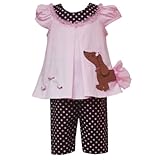 Rare Editions Baby/Infant Girls 12M-24M 2-Piece PINK BROWN POLKA DOT SPLIT-FRONT PUPPY DOG Top/Capri Pants Outfit Set 24M-RRE-29230F-F129230
Rare Editions Baby/Infant Girls 12M-24M 2-Piece PINK BROWN POLKA DOT SPLIT-FRONT PUPPY DOG Top/Capri Pants Outfit Set 24M-RRE-29230F-F1292304:20 AM
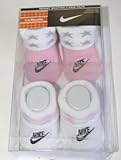 Nike Baby Infant Booties 2 pair (1 set) 0-6 months pink & white with stars
Nike Baby Infant Booties 2 pair (1 set) 0-6 months pink & white with stars3:15 AM
After discovering you are pregnant, an overwhelming amount of questions pop into your mind. How you will you educate your baby is one of the myriad of questions you will have. Some parents choose to utilize tools such as video tapes and toys to help their babies learn, while others prefer personal interaction. It is important to consider how the human mind develops so you provide your baby an educational experience which is relevant to her level of development.
A 2-month-old baby spends most of their time eating or sleeping, and really won't have much interest in rudimentary arithmetic no matter what the people trying to sell you the videos may say. There are things that will engage your baby's interest and help him develop his or her brain and senses, however.
Firstly, young babies love faces. Your mouth moves and makes sounds, your eyes blink, your cheeks can puff out, your head can nod, and shake, and your tongue can move in and out. For baby, this is the best toy ever invented. For you, it is the most affordable educational toy ever invented. The words you speak, their inflection and intonation, all attract the baby's interest as well. This is still the best education your baby can get in spite of the fact your baby is still quite a long way away from. Faces are fundamental to the human social world, and your baby will spend the rest of his or her life trying to interpret facial expressions. Forget all those dopey videos, the best educational entertainment for your baby is to watch your face and watch and hear you speak.
It is impossible to spend all your waking time talking to your baby and entertaining him. Most parents hang a mobile over baby's crib. This kaleidoscope of shapes and colors engages their attention and hones the connections between their eyes and brain. It is possible for babies to get bored just like everyone else. You will want to change the appearance of the mobile, or maybe replace it with another mobile, at intervals. The changes can be small or large. For example, of baby's mobile has horses, you can tie bows around their neck one day and bells the next.
When your baby can sit upright for long periods of time without falling over, it's a great time to get a set of blocks. These blocks have to be small enough that your baby can hold them but big enough that they won't try to swallow them. A good game to play with baby is "stack and tumble." You stack the blocks, and your baby is charged with the task of knocking the blocks over. How many blocks can be stacked before baby knocks them down. This may seem rather pointless to you, but baby is learning something absolutely fundamental: cause and effect. This simple experiment says to baby: when I do something, it causes something to happen.
Baby eduction is quote simple, ultimately. Elaborate 'educational' videotapes are not needed; babies need to develop the basic connection between their senses and their brains.
David Cummings is a devoted husband and regular author on many topics. He is committed to helping parents create better family time and to working with children's organizations. David is also the General Manager for BustlingBaby.com - a company offering products for active parents and babies, such as baby travel systems and baby strollers
10:40 AM
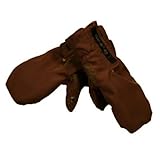 Outside Baby Boys Two Layer Fleece Mitten Brown Trees Infant 0-1y
Outside Baby Boys Two Layer Fleece Mitten Brown Trees Infant 0-1y10:05 PM
Two important baby scrapbook ideas to bear in mind are physical changes and milestones. First smiles, first roll over and crawl, first words and gestures are all priceless and need to be recorded quickly before the infant advances to toddler hood (which could be a whole other scrapbook and will happen in what will appear to be the blink of an eye)!
Here are some baby scrapbook ideas, which will help you organize your material.
1. Begin the baby scrapbook journey during your pregnancy.
Start with photos from baby showers and early ultrasounds. Include doctor's visits and the actual delivery day. What was the weather like? Anything else special happen on that day? (Of course, there couldn't be anything more special than baby's arrival into the world.) Who was present at the birth? Doctors, nurses, visitors? Record it for all time in your baby scrapbook.
2. Focus on the first year of life.
Some things should be written down for the sake of posterity, like weight and length at birth for example. You might also want to include color of eyes and hair, time of birth, doctor's name and how long you were in labor. Other baby scrapbook ideas will come to you as you progress in your project such as perhaps, the price of gas, houses and cars at the time of birth and information on the family tree.
3. Use photos to indicate milestones.
Take photos every day of the first month of life and then once a month next to a large stuffed animal. Keep a list of events connected to each month until the baby is a year old. Take pictures of different looks and moods; happiness, sadness and don't forget the most adorable moments of sleeping time. Don't be afraid to take too many pictures, as that can never happen in the endless search for baby scrapbook ideas.
4. The baby scrapbook must reflect emotion.
You want to smile and maybe even cry whenever you look at your baby scrapbook. The way to insure this is to pick those topics to write about that cannot help but evoke special feelings even when viewed years later. Some baby scrapbooking ideas might include: how the baby got his or her name, what does the name mean, how often did he or she cry, where did he or she sleep, did the baby sleep through the night and how did the little one react around people? Have other close relatives and friends write their feelings about these events on a special page designated for this purpose.
5. Decorate your baby scrapbook with items that are baby-related.
Although this may seem obvious, it's still a good baby scrapbooking idea to keep in mind while trying to capture as many feelings and memories about past happiness. Use stickers and ribbons. Keep trinkets and mementos, even things like wrapping paper from special presents. Capture all these moments of baby's first year with pictures and journaling. One baby scrapbooking idea for use of ribbons could involve cutting a journaling block into strips and then tying a ribbon in a bow to the left end of the first strip, then the right end of the second strip etc. Still another effective baby scrapbooking idea for ribbon might involve scraps, which could be made into bows and used to cover a spiral binding.
Don't forget real mementos, such as a clip of hair from baby's first haircut and also famous quotes and sayings about babies and babyhood might be appropriate as headings or captions on the different pages. The world of literature is your source material. Try to choose selections that are not so common. It may take a little research but this is one baby scrapbooking idea that is sure to pay off at the end.
Your baby will only be an infant for a moment in time. Capture it for always with a memorable baby scrapbook. Use these baby scrapbooking ideas, and as you do you will certainly come up with ideas of your own. But hurry. Time's a wasting!
Michele Cardello, director of marketing and creative for Life Imprints, a creative scrapbooking [http://www.lifeimprints.com] supplies company also offering contemporary picture frames, in Cleveland, Ohio, has worked in the photo packaging industry for 10 years. Cardello helps customers find creative ways to preserve and appreciate a lifetime of memories.
2:05 AM
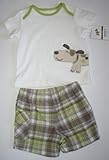 Carter's Little Collections 2 Piece "Doggy" Shirt & Plaid Short Set (6 Months)
Carter's Little Collections 2 Piece "Doggy" Shirt & Plaid Short Set (6 Months)4:50 PM
In order to lose 60 pounds in 3 months you will need to shock your body into losing a lot of weight fast. Just so you know, to lose 60 pounds in 3 months isn't the easiest thing in the world and will require you to commit to this process heart and soul. However, with the right will and determination, it can be done.
In order to lose 60 pounds in 3 months, I suggest that you begin by cleansing your body. What this does is get rid of a lot of undigested pounds which have accumulated inside your body and which are weighing it down and damaging your health. Each person carries around some undigested weight. By using a detox diet, you can quickly flush out of your system all those pounds, lose a lot of weight fast and be ready for the next step of the process. This detox phase takes 10 days tops and you will see a great reduction in your weight. I suggest using the Master Cleanse detox diet as it's a program that's been around for many years and has many positive testimonials from men and women.
After you finish with the detox diet, you should take a few days to a week off any dieting and eat regularly (but healthy). Then the next phase of your process to lose 60 lbs in 3 months will commence. In this phase you will choose one of 2 courses:
You should follow either of these 2 programs for 2 months. These will provide a slower weight loss rate than the Master Cleanse, but they're more healthy to use for a long time straight. They should bring you closer to achieving your goal of losing 60 pounds in 3 months.
About 10 days before your 3 months are over, you should go on the Master Cleanse again to give your body the final push it needs to shed the last of those 60 pounds. If you do everything right, you have a good chance to lose 60 pounds in 3 months.
To read more about the Master Cleanse, Fat Loss 4 Idiots, and Turbulence Training, visit this webpage:
How To Lose 60 Pounds Fast. It's a review of ways to lose 10 pounds fast, but the same things apply to losing 60 pounds.
John Davenport lost over 30 pounds in his twenties after being overweight most of his life. To read more about fast weight loss, click here: Fast Fat Loss Diet
9:10 PM
1:40 PM
When can I introduce Flax and Flax Seed to my baby? Is Flax Good for Babies? What exactly is Flax and Flax Seeds and how will Flax benefit my baby?
Flax and Flax Seed is something that most of us have heard of either in passing or mentioned in an article somewhere. We know Flax is "good for us" and contains Omega 3's. Many people however have no idea where to buy flax, how to serve it and most importantly, when it may be introduce to baby and toddler. Our topic for October 2006 will introduce you to Flax. We'll show you how and when you may introduce Flax and Flax Seed to your baby!
As always, we recommend that you consult your pediatrician whenever you introduce your baby to a new food; generalities may not apply to your baby!
What is Flax?
Flax has been cultivated for centuries, it's cultivation can be traced back to the Stone Age even. The American Colonists grew flax to use it's fiber for making (linen) cloth and cultivated Flax for commercial production as far back as the 1700's!
Flax is a flowering perennial. It's flowers are plentiful and are amazing to see! Flax blooms from May through September. Flax is mostly grown in Canada and in the Northern Mid-West areas of the United States. Flax has amazing health properties and is a good source of healthy oils, fiber, and other essential nutrients for baby's (and adult's) health, growth and development. The three essential components of Flax that are wonderful for our bodies are:
How Much Flax Should I Offer my Baby?
We would recommend offering your younger baby no more than 1 tablespoon of Flax per day. Note that 3 teaspoons are equivalent to 1 tablespoon so you may add up to 3 teaspoons in several "meals" during a day. While one cannot really "overdose" on Flax, it is important to keep the dosage relatively low as Flax is a natural laxative. It is possible that very loose stools and/or diarrhea will occur with eating too much Flax. Many parents who give their babies Flax increase the amount once baby has turned 1 or 2 years old.
As with any new food, it is important that you watch out for any possible reactions. While Flax is not considered a high allergen, you still want to watch for any digestive upsets!
How Can I Add Flax to my Baby's Meals?
Many people add whole Flax Seeds directly to their baked goods and cereals. It has been found that the seeds may not prove to be as healthful as using the Flax Oil, Ground Flax or Flax Meal. The whole seeds may not break down enough in the digestive system to completely release all the wholesome and healthy goodness of the Flax.
Flax Oil, Ground Flax or Flax Meal may be added to your Baby's food in a variety of ways! (ensure your choice of foods is age appropriate for your baby!!)
You cannot cook with Flax Oil as you do with Olive Oil! Flax oil will burn and go rancid when heated.
How do I store Flax?
Flax must be stored properly as it is very delicate. Whether you are using Flax Oil or Ground Flax, store your Flax in the refrigerator! Flax can go rancid very quickly and then it will be unhealthy to eat! Whole Flax Seeds are not as delicate and may be kept for up to 2 years in a dry cool sealed container.
How Will Flax Benefit My Baby's Health and My Family's Health?
One tablespoon of ground Flax Seed has about 40 calories, 2.3 grams of fiber and 2.8 grams of fat, 1.5 grams of which are omega-3s. Flax Seeds also contain Iron, some Calcium, Vitamins B-1, B-2, Vitamin C and E and some Vitamin E and carotene too! WOW! That's a lot of healthy nutrients packed into seeds!
Flax Oil is not as nutritious en masse as Ground Flax Seeds or Flax Meal. Your baby will still obtain all the Essential Omega 3 when using the Flax Oil however the protein and other nutrients decline when Flax Seeds are pressed into Flax Oil. It is worth grinding your own Flax Seeds or purchasing Ground Flax Seeds so that you can obtain all the healthy goodness of Flax!
Due to it's high soluble fiber content, Flax Seed or Flax Oil is a great natural laxative! Use Flax Seed Oil to help your baby with Constipation and to help keep the whole family "on schedule"!
Flax Resources & Learning More
Margaret Meade is the Editor of http://www.wholesomebabyfood.com and is the mother of 3 boys. The boys were raised on all Homemade Baby Food; and since Mommy had been studying nutrition for many years, she knew homemade was best! Visit wholesomebabyfood.com and find out how easy it is to make your own baby food. Once you begin, good healthy eating habits will automatically flow!
Designed by 2 month babies review |